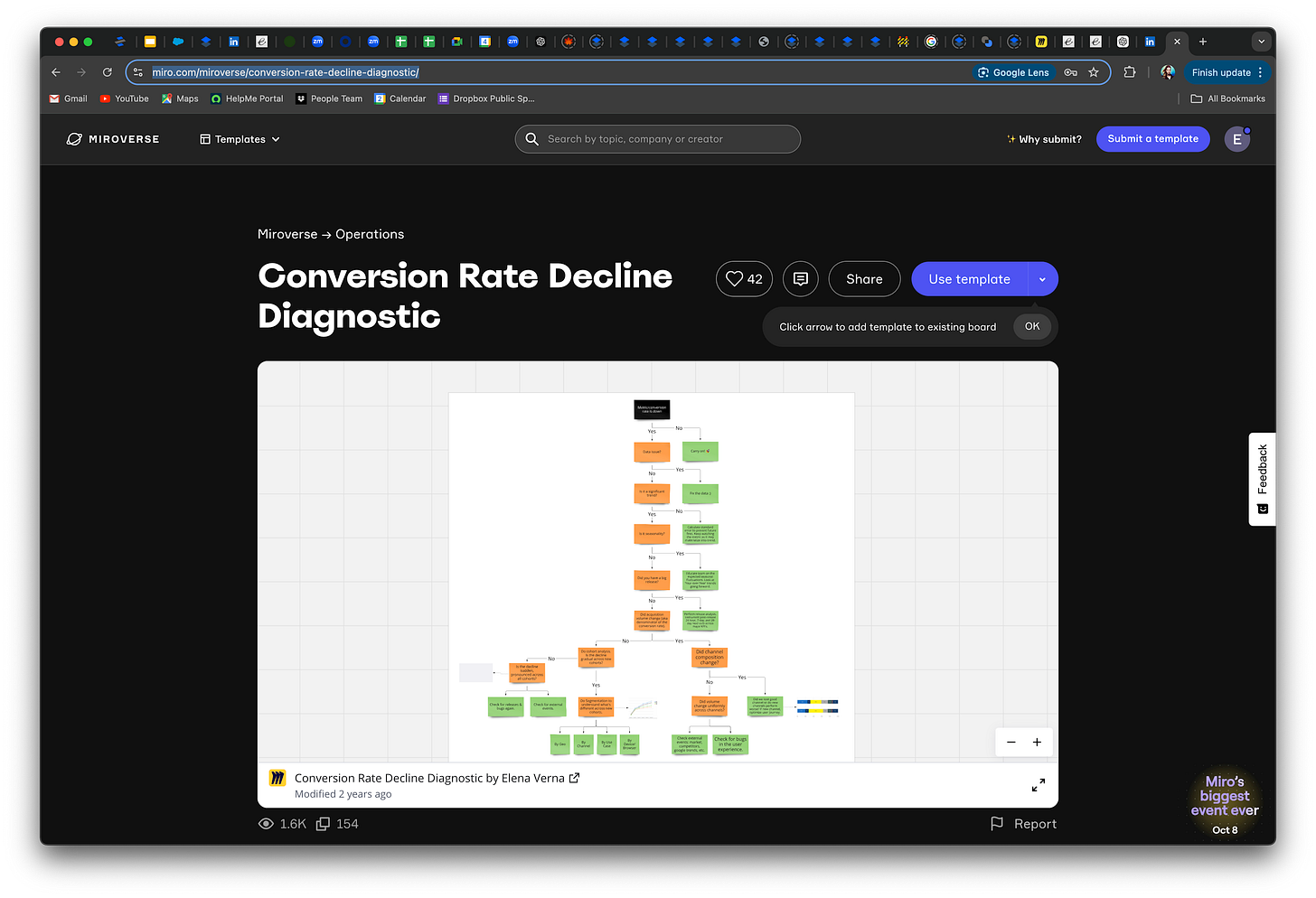How to get started with User-Generated Content
It doesn't have to be an overwhelming project...
This post is brought to you by: Eppo. Eppo is a next-generation A/B testing platform trusted by Growth teams at companies like Twitch, DraftKings, Perplexity, and Coinbase. Teams who use Eppo see 10x experiment velocity across marketing, product, and AI use cases.
Last week, I wrote about how important User-Generated Content (UGC) will be for the future of SEO. This is a promised follow up on how to get started with UGC.
Notion, Canva, Miro, Amplitude, and Webflow are all doing it because UGC is the only way to deliver authentic, niche content at scale. It’s becoming even more relevant as AI-generated content floods the internet.
But… how do you actually get started with UGC? And what metrics should you track, when you’re first getting started?
First off, think of building UGC for your business as a “walk-before-you-run” type of project. You don’t start with grand, fully automated systems. You start small, with intentional steps, validating your approach as you go. I’ll walk through some of the initial elements and outline key metrics you should track at each phase.
1. Building a Content Marketplace
Think of UGC as a content marketplace. Every marketplace has 2 sides: supply and demand:
Supply Side: Your creators are users who can generate content that will eventually be consumed by prospects or your existing customers.
Ideally content is something your customers are naturally creating as part of getting the value out of your product, such as:
Amplitude - The customer creates a dashboard that can be converted to a template
Notion - The customer creates a doc that can be converted to a template
Miro - The customer creates a whiteboard that can be converted to a template
Key supply-side metrics are:
Number of creators: How many users are willing to contribute content?
# of content pieces per creator: How many pieces can you get from each creator?
(This is important because it relieves the pressure of needing to find new creators.)
Demand Side: On the other side of the marketplace is the demand for user-generated content. The law of marketplaces is to always focus on demand—if demand exists, supply will follow. Therefore, finding demand for content should be your primary objective. Although the content is user-generated, it should be distributed by the company.
Demand-side metrics to track include:
Content views: How many people are engaging with the UGC?
Content adoption: How many users are copying/using the content?
2. Starting with Supply
The mistake many companies make is trying to “boil the ocean” from day one. Don’t. Your end goal might be to have a Canva-like system where everything is automated, but in the beginning there are only two things you need to focus on: finding users willing to contribute content and ensuring that content is of high quality.
Finding Users to Contribute
In the early stages, prioritize engaging your power users—those who are already invested in your product, often promoting it on social media or actively contributing on your platform.
Tip: Reach out on social media to anyone who has publicly praised your product! They’ll be delighted that you’ve noticed them, will likely collaborate, and will likely become even more loyal to your product.
To convince them to contribute, appeal to their intrinsic motivation. You can let them know that, by contributing, they will get visibility: you will use your brand and distribution to amplify their name. This is powerful! Not only does it help them build their own personal brand, but there’s also the reciprocation factor—they’ll share your posts about them with their networks, creating a positive word-of-mouth loop.
Think about how many times you can get content from the same user vs. needing new users for fresh content. For example, I assume Canva is able to get multiple templates out of the same user. And with Miro, we definitely did just that, regularly asking the same users to share their work, which lowered the pressure on us to continuously acquire new creators.
Maintaining a High-Quality Bar
Quality is everything at the start. If you launch with 10 templates and 9 are subpar, users won't return. But if all 10 are outstanding, you’ll give people a reason to come back. Focus on highly curated content, prioritizing quality over quantity.
Spend time curating and helping users improve their submissions. Offer design and copy assistance to make their content exceptional.
Aim to publish 20-30 templates monthly using your existing marketing site to reduce logistical overhead. If necessary, hire a contractor to handle tasks like uploading content, but your focus should be on selecting creators and refining their content.
Don’t forget about showcasing the creators. Each content piece should have a dedicated landing page along with a profile for the user who created it. This gives authors proper credit and amplifies their work, contributing to your brand’s visibility.
Commit to this high-touch, manual approach for the first 3-6 months. In parallel, set up a distribution engine to push content back out to your users. Once you see steady engagement, you can think about adding automation.
Real-Life Example: When we first launched Miroverse, it started as a marketing effort. Our PMM, Kristin, spearheaded the effort, manually finding users and curating content. She created a Typeform for submissions and scoured LinkedIn and X for potential contributors. She worked with a brand designer to polish templates and enlisted an editor for copy improvements. We also hired a contractor to handle the CMS logistics. She was able to drive ~30 templates/month that were added to our marketing site.
Here is an example of one of my templates in Miro’s Miroverse—which resides on the marketing site.
Note:
Social proof of likes, views, and copies (these came about 1–2 years into the project)
Main ‘Use’ or ‘Share’ call-to-action buttons (must have from the beginning)
Keep reading with a 7-day free trial
Subscribe to Elena's Growth Scoop to keep reading this post and get 7 days of free access to the full post archives.



